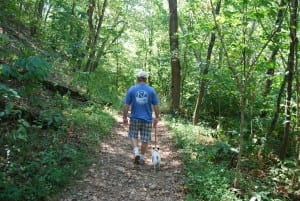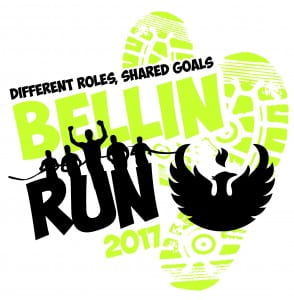
Mindfulness is defined as being present in the moment in a nonjudgmental way. Becoming mindful in our lives expresses itself in multiple ways:
- Being aware and accepting of present experience
- Bringing focus, awareness and attention to the present moment
- “Single-tasking” rather than multi-tasking
- Being wholeheartedly present here and now
- Appreciating the present moment rather than wishing it away
- Being attentive to what you are doing rather than operating automatically
- Nurturing attitudes of acceptance and non-judgment, which adds warmth, friendliness and compassion
You can practice mindfulness in almost everything you do.
Informal Practice – involves reminding ourselves throughout the day to focus our attention on whatever is happening in the moment, which increases our ability to respond effectively. A simple example is becoming more mindful of our movement, which may lead to taking the stairs instead of the elevator or bicycling instead of driving. Practicing mindfulness in this way involves experiences like:
- noticing the sensations of walking when we walk
- noticing the taste of our food when we eat
- noticing the clouds and the trees as we pass them
- noticing the feel of soapy water on our hands when washing dishes
- focusing our attention on our friends and family when we’re with them
Opportunities for informal mindfulness practice are infinite. At every moment, when it’s not necessary to be planning or thinking, we can simply bring our attention to what is happening in our sensory awareness.
Formal Practice – involves setting aside time to go to the mental “gym.” Unlike informal practice, in which we’re accomplishing another task while practicing mindfulness, formal practice means dedicating a period of time entirely to cultivating mindfulness per se. Mindfulness meditation is a formal practice that has been studied scientifically. This practice involves choosing an object of attention such as the breath or another sensation and returning our attention to that object each time the mind wanders. Through this formal practice we develop a degree of concentration that allows us to focus closer attention to any physical or emotional sensation, such as an itch, ache, sound or feeling. Regardless of the object of attention, we practice being aware of the present experience with acceptance.
Why Practice Mindfulness?
Do you ever find yourself worrying about the future, feeling angry or sad, feeling guilty or ashamed, getting upset about physical pain, or just feeling bored or stressed? Sometimes the feeling is more subtle and you may just feel “out of sorts.” There may be times when you get taken over by anxiety, depression, addictions, pain or other stress-related symptoms that make it difficult to function. Emotional suffering comes in all forms. Mindfulness is a way of relating to life that holds the promise of both alleviating our suffering and making our lives richer and more meaningful.
The point of being mindful is to develop a close relationship with your own mind. You become more familiar with what you are thinking and feeling, and less reactive to the thoughts, emotions and cravings you have. Mindfulness is a practical way to develop our ability to see the world around us more clearly and understand ourselves and others better, so that we might live a more joyful and fulfilling life.
Mindfulness practices have been around for thousands of years. Research in the past twenty-five years has proven that mindfulness can help people with a vast range of emotional and physical disorders, which has led many people from all walks of life to be more open to the practice including hospitals, businesses, governments, athletes, schools and the military.
Stress has been cited as a cause of more than 70% of all family doctor visits for illness and 66% of Americans report having trouble focusing at work because of stress. Job stress costs U.S. industries more than $300 billion per year. These costs include missed work, employee turnover, decreased productivity, and medical, legal and insurance costs. Mindfulness programs have been shown to help reduce many stress-related symptoms and improve overall health, including outcomes such as the following:
- 80% fewer hospitalizations for heart disease
- 83% improvement in decision making skills
- 60-70% fewer symptoms of anxiety and depression
Benefits of Mindfulness
Meditation practice can yield all of the following benefits:
- Strengthened immune system
- Improved cardiovascular health
- Reduced blood pressure
- Balanced hormones
- Improved digestion
- Help maintain weight
- Increased ability to relax
- Reduced fatigue and anxiety
- Increased energy
- New coping skills
- Better brain function
- Sense of calm
- Decreased depression
- Help with relationships
- Enhanced listening skills
- Focus on goals and meaning
- Resiliency
Just how can the simple practice of mindfulness provide all of these positive benefits? Paying attention to the present moment can improve the functioning of the body and brain in two specific ways. Mindfulness:
- Helps You Be Less Reactive – When you slow the mind, you think more clearly. You respond thoughtfully instead of simply reacting. Many people use the same coping mechanism over and over, repeatedly reacting the same way without thinking. Although this coping mechanism may be a healthy one, such as choosing walking or jogging rather than food or alcohol when frustrated, being mindful allows you to be intentional about healthy choices. Being mindful also helps you be more aware of how you unconsciously and consciously react to stress so you can find new ways to deal with the situation.
- Helps Relax Your Body – Short-term effects of mindfulness on the body are similar to the benefits of relaxation. When you are in a mindful state, you experience a decrease in perspiration, a slower heart rate, and changes in alpha waves in your brain. These physiological changes are evidence that your body is going into relaxation mode. Your body can’t be relaxed and stressed at the same time so, when you are relaxed, you think more clearly and tend to make wiser decisions.
Article from The StayWell Company, LLC

















